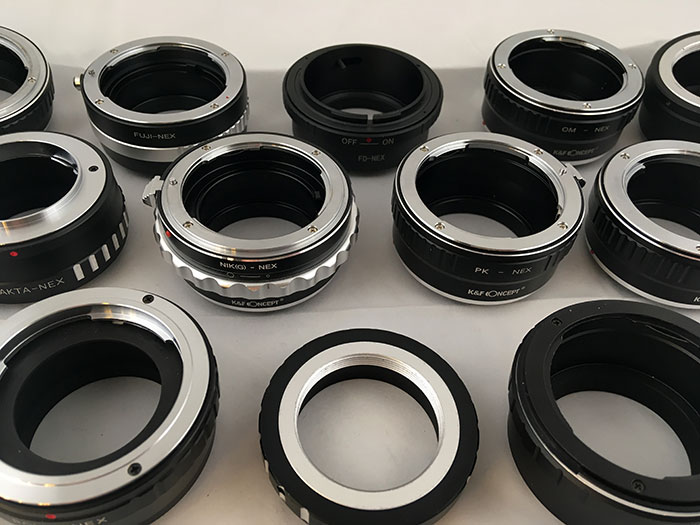If you’re not new to using legacy lenses on modern digital cameras (especially mirrorless cameras), you might notice that as the lenses keep piling up, so too do the adapters.
Too many adapters? The root cause.
One of the joys of using legacy lenses is in the multitude of options available. Even if you’re into, say, 1970s Japanese lenses, there are almost ten major brands to choose from, each of which have their own rendering, colour, flaring characteristics, etc. But most importantly, almost each of them has their own mount and – generally – necessitate their own adapter.
On the other hand, if your appetite is wider, you may not be satisfied with Japanese lenses, but also want to play with German or Soviet, even French, Swiss, or (god forbid!) American lenses. More mounts. More adapters!
Or you might want to play with different lenses from different eras. Not only 1970s lenses, but also earlier and later lenses. Again: More mounts. More adapters.
Or maybe you’re the consummate D-I-Y lens hacker who – either using a 3D printer or a (perish the thought:) lathe – manufactures their own adapters that allow them to mount everything from lenses violently extracted from compact cameras to projector lenses or lenses from pre-war folding cameras… Yup. More adapters.
But wait, there’s more, because there is more than one type of adapter available. Not only are there the classic, dumb adapters, but there are also helicoid adapters, tilt or shift adapters, speed-boosters and even the odd autofocus adapter. You got it: More adapters
And just to add insult to injury, you might be the kind of photographer who has several digital systems to contend with – maybe you’re just the consummate gear-head who has to see for themselves what the field has to offer, or maybe you started with one system or sensor size, then decided to try what the competition/another sensor size has to offer. Suddenly it is conceivable that you end up with as many adapters as you have lenses.
The solution?
A new JAPB article aims to discuss some hard-learned tips on how to manage adapters – especially, how to deal with the situation in which the number of adapters starts to warrant their own box/suitcase/drawer.
And if you are in that situation already, the concept I have to offer may be too little, too late.
If – on the other hand – you’re only now starting on your journey, then the following might be of value to you
